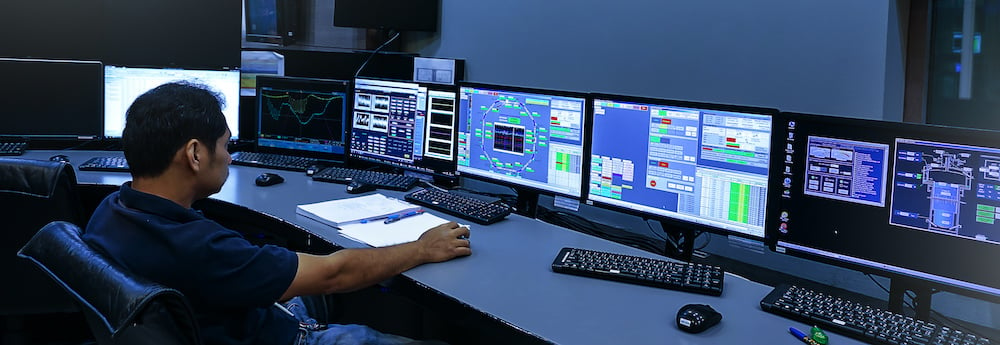Monitoring Made to Measure Simplifies Power Monitoring [VIDEO]
Your power monitoring needs are unique. You need a system built specifically to meet these needs. Sound expensive? Packet Power’s "Monitoring Made to...

Critical facilities like data centers require a power infrastructure that is energy-efficient and cost-efficient but, above all, reliable. Downtime is expensive and even possibly "career limiting." Power problems can also result in damage to equipment. Power monitoring helps avoid downtime by providing facility management with the information needed to allocate power most effectively, detect problems early, and resolve issues with minimal disruption.
The ultimate goal is to ensure enough power is available to consistently and reliably maintain optimal equipment performance. In data centers, for instance, power requirements may fluctuate constantly. Power monitoring captures usage across time. It gives facility managers insight on what drives peak loads, real-time power system health, and longer term trends for load balancing and capacity planning.
1. Efficient power distribution
Power monitoring enables you to see where load is coming from. This provides the data needed to add load to the UPS, PDU, or RPP where power is most available. At the cabinet level, it allows you to ensure load is balanced by phase in cabinets with three-phase power sources.
2. Scheduled downtime
Data centers and other critical facilities cannot have unplanned outages. These facilities are fundamental to business operations 24/7, so they must operate continuously, relying on redundant power sources to ensure continuous operation during scheduled maintenance, commissioning or decommissioning activities. Power monitoring can track load on primary and secondary power sources so you can be confident there will be enough backup power available to cover planned downtime.
3. Adequate cooling
Power and cooling go hand-in-hand. Equipment that draws more power generates more heat. Overheating can lead to performance dips, outages, or damage that shortens equipment lifespan. Power monitoring lets you know how much power you’re using both for computing and for cooling. It can be a proxy for locating hot spots (a job better handled by environmental monitors), and is essential for calculating metrics such as PUE that track how the overall energy efficiency of a facility is improving across time.
4. Branch circuit monitoring
Power monitoring at the branch circuit level (the level that feeds power to cabinets) gives you a very detailed picture of power usage. You can allocate expenses more precisely, unburden overloaded circuits, and better spot available power. This information lets you redistribute power as needed to maintain optimal balance.
5. Phase-balancing
Today it's typical for branch circuits to use three-phase power. If the phases are not equally loaded, power is used less efficiently. And if load by phase is really neglected, it could lead to a plug bank breaker tripping on the rack PDU. Power monitoring shows consumption by phase (often displayed right at the cabinet), highlighting any load imbalances.
6. Identify stranded power
A facility's use of power changes across time and new loads are added and old loads removed. This can result in uneven load across different tiers of the power distribution. Power monitoring provides the information needed to see where power is available along with how much power can be used (even taking peak loads into account).
7. Identify phantom load
It's not uncommon for there to be a gap between the known load from the utility meters and the load that can be measured manually or with some metering present in various places. A well-metered facility will eliminate the gaps and make it possible to determine the source of 100% of the load.
8. Insight
Beyond streamlining day-to-day operations, the data gathered through power monitoring facilitates more proactive, predictive facilities management. You can:
Most facilities now plan to monitor power at the branch circuit level. This greatly increases the number of monitoring points needed when compared to monitoring only at the UPS, PDU or even RPP levels. Wireless meters make this level of monitoring much more feasible. They're easier and less expensive to install and avoid the need for complex IT networks and a large number of data comm wire runs. And Packet Power's wireless power monitors are compact enough to fit in tight spaces that wired monitors may not.
Every minute of unexpected downtime negatively affects operational performance, customer and employee experience, and your bottom line. The right power monitoring equipment gives you the data you need to proactively reduce downtime.
Power monitoring that's right for you
![Monitoring Made to Measure Simplifies Power Monitoring [VIDEO]](https://www.packetpower.com/hubfs/Blog/Monitoring%20Made%20to%20Measure.jpg)
Your power monitoring needs are unique. You need a system built specifically to meet these needs. Sound expensive? Packet Power’s "Monitoring Made to...

Power and environmental monitoring can reduce outages and downtime by keeping you abreast of operating conditions within your critical facilities at...
![Installing Packet Power Smart Power Cables [VIDEO]](https://www.packetpower.com/hubfs/Blog/Packet%20Power_Smart%20Power%20Cable%20Install.jpg)
Monitoring the power usage of any device that with a plug is simple with Packet Power’s Smart Power Cables. Just how easy is it? This short video...